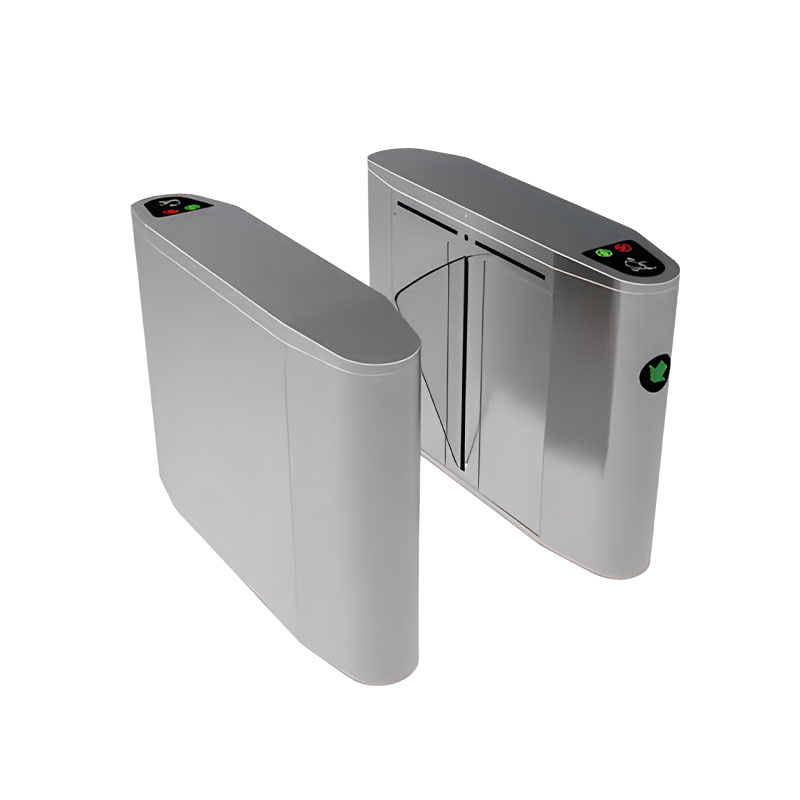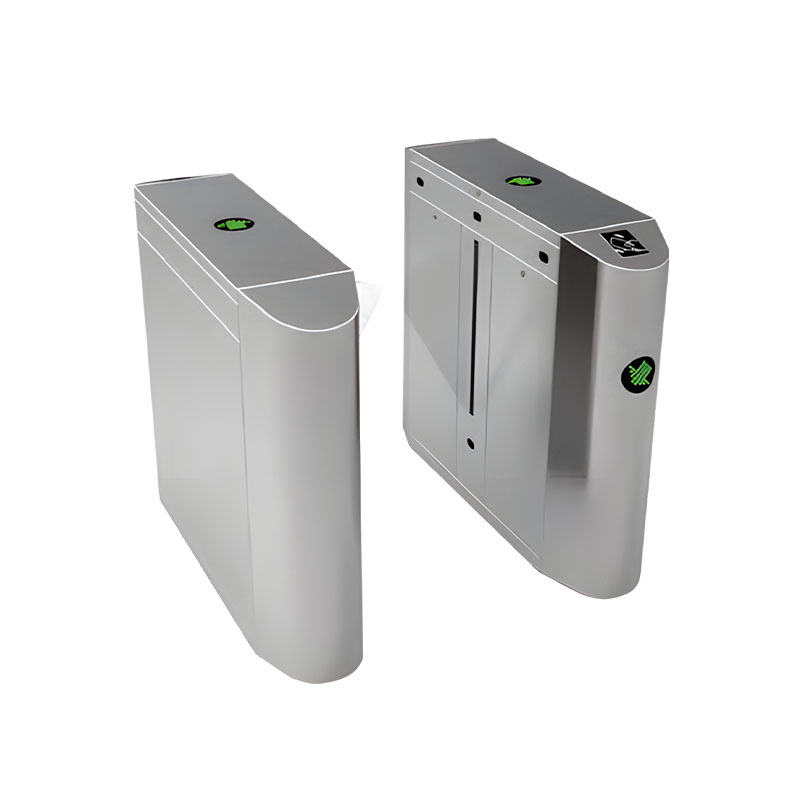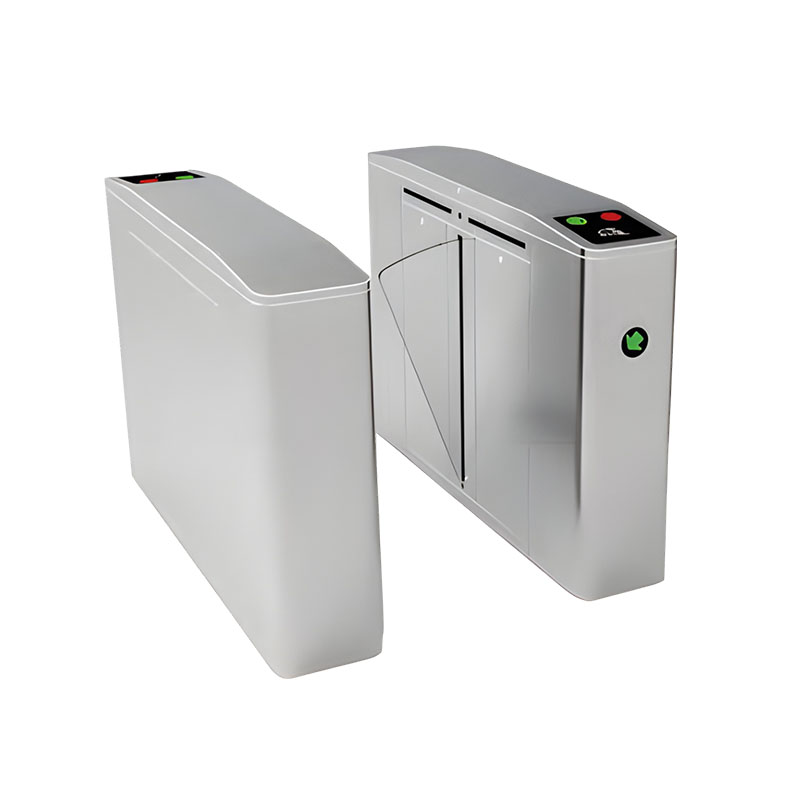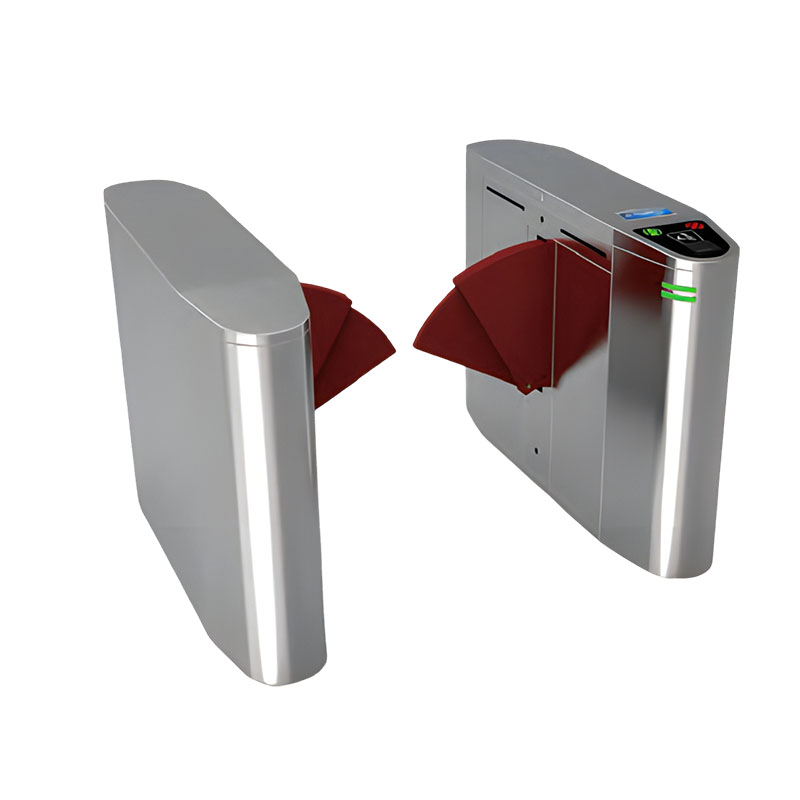How do infrared sensing systems prevent illegal tailgating and trespassing?
Release Time : 2025-09-11
In the context of modern urban spaces, the pedestrian access gate, with its elegant and resolute presence, has become an intelligent hub connecting security and order. No longer a cold alternative to traditional iron fences or guard booths, it is an artistic installation that blends industrial design, biometric technology, and humanistic interaction. With every opening and closing, it silently embodies efficiency, order, and respect.
The appeal of the pedestrian access gate lies first and foremost in the harmonious union of its "beautiful form" and "elegant materials." Eschewing the stereotype of being bulky and oppressive, the contemporary pedestrian access gate adopts a streamlined design language with clean, flowing lines and distinct yet gentle contours. Whether it's a three-roller gate in an office building lobby, a wing gate at a subway station, or a swing gate in a high-end residential complex, its appearance is meticulously crafted to blend seamlessly with the architectural style. The clever combination of materials, including stainless steel, tempered glass, and high-strength engineering plastics, ensures both structural strength and durability while creating a rich visual experience. The cool luster of the metal contrasts with the translucent texture of the glass, creating a spatial ambiance that blends technology and modernity. Some high-end models also incorporate dynamic LED indicator strips. As pedestrians approach, the lights illuminate like breathing, guiding traffic flow. At night, they become a flowing display of light and shadow, elevating functional equipment into an aesthetically pleasing feature. This meticulous attention to detail elevates the pedestrian access gate from a safety barrier to a decorative element that enhances the quality of the space.
The innovation lies in the deep integration of "intelligent perception" and "seamless passage." The core value of the pedestrian access gate has evolved from simple "blocking" to intelligent "management." By integrating multiple authentication methods, including facial recognition, fingerprint recognition, QR code scanning, and IC card reading, it enables contactless and efficient personnel verification. Pedestrians no longer need to produce IDs or cards; simply walk naturally, and the system instantly completes the identity verification, automatically opening the gate for a seamless and smooth process. This "touchless" access experience significantly improves traffic efficiency during peak hours and reduces queues and congestion. Even more innovative, some smart gates incorporate features such as anti-tailgating, anti-pinch, and direction recognition. Infrared sensors monitor the passageway status in real time. If they detect an unauthorized intruder or multiple people following closely, an alarm is triggered and the gate is locked. The robotic arm automatically rebounds if it encounters resistance during the closing process, ensuring personal safety. These intelligent algorithms, hidden within their ingenious structure, act like invisible guardians, silently maintaining order and dignity.
Their advantages are deeply rooted in the dual values of "security and control" and "data connectivity." Their most significant advantage lies in their robust access management capabilities. Pedestrian access gates seamlessly integrate with access control systems, time and attendance systems, and visitor management systems, enabling real-time collection and traceability of personnel entry and exit records. Administrators can view detailed access logs through the backend and set access permissions for different time periods and areas, effectively preventing unauthorized access to sensitive areas and ensuring the safety of offices, production facilities, or residential environments. For large campuses or public venues, multiple gates can be networked to form a unified security network, supporting remote monitoring and centralized control, significantly improving management efficiency. Furthermore, the modular design makes installation and maintenance extremely easy, allowing for flexible configuration of one-way, two-way, or barrier-free access according to site requirements, adapting to diverse usage scenarios.
The pedestrian access gate is an "intelligent gatekeeper" for spatial order. Its smooth lines outline a secure perimeter; its sensitive sensing ensures compliant passage; its sturdy structure resists unauthorized intrusion; and its interconnected data weaves a network of management. Standing tall at a building entrance, its precise opening and closing and silent operation are a silent commitment to efficiency and safety. Choosing a pedestrian access gate means choosing a balance of intelligence and elegance for your venue. It embodies inclusiveness in interception and convenience in control. With cutting-edge technology, user-friendly design, and reliable performance, it redefines how people interact with space, becoming an indispensable "first feature" of smart cities and modern management.
The appeal of the pedestrian access gate lies first and foremost in the harmonious union of its "beautiful form" and "elegant materials." Eschewing the stereotype of being bulky and oppressive, the contemporary pedestrian access gate adopts a streamlined design language with clean, flowing lines and distinct yet gentle contours. Whether it's a three-roller gate in an office building lobby, a wing gate at a subway station, or a swing gate in a high-end residential complex, its appearance is meticulously crafted to blend seamlessly with the architectural style. The clever combination of materials, including stainless steel, tempered glass, and high-strength engineering plastics, ensures both structural strength and durability while creating a rich visual experience. The cool luster of the metal contrasts with the translucent texture of the glass, creating a spatial ambiance that blends technology and modernity. Some high-end models also incorporate dynamic LED indicator strips. As pedestrians approach, the lights illuminate like breathing, guiding traffic flow. At night, they become a flowing display of light and shadow, elevating functional equipment into an aesthetically pleasing feature. This meticulous attention to detail elevates the pedestrian access gate from a safety barrier to a decorative element that enhances the quality of the space.
The innovation lies in the deep integration of "intelligent perception" and "seamless passage." The core value of the pedestrian access gate has evolved from simple "blocking" to intelligent "management." By integrating multiple authentication methods, including facial recognition, fingerprint recognition, QR code scanning, and IC card reading, it enables contactless and efficient personnel verification. Pedestrians no longer need to produce IDs or cards; simply walk naturally, and the system instantly completes the identity verification, automatically opening the gate for a seamless and smooth process. This "touchless" access experience significantly improves traffic efficiency during peak hours and reduces queues and congestion. Even more innovative, some smart gates incorporate features such as anti-tailgating, anti-pinch, and direction recognition. Infrared sensors monitor the passageway status in real time. If they detect an unauthorized intruder or multiple people following closely, an alarm is triggered and the gate is locked. The robotic arm automatically rebounds if it encounters resistance during the closing process, ensuring personal safety. These intelligent algorithms, hidden within their ingenious structure, act like invisible guardians, silently maintaining order and dignity.
Their advantages are deeply rooted in the dual values of "security and control" and "data connectivity." Their most significant advantage lies in their robust access management capabilities. Pedestrian access gates seamlessly integrate with access control systems, time and attendance systems, and visitor management systems, enabling real-time collection and traceability of personnel entry and exit records. Administrators can view detailed access logs through the backend and set access permissions for different time periods and areas, effectively preventing unauthorized access to sensitive areas and ensuring the safety of offices, production facilities, or residential environments. For large campuses or public venues, multiple gates can be networked to form a unified security network, supporting remote monitoring and centralized control, significantly improving management efficiency. Furthermore, the modular design makes installation and maintenance extremely easy, allowing for flexible configuration of one-way, two-way, or barrier-free access according to site requirements, adapting to diverse usage scenarios.
The pedestrian access gate is an "intelligent gatekeeper" for spatial order. Its smooth lines outline a secure perimeter; its sensitive sensing ensures compliant passage; its sturdy structure resists unauthorized intrusion; and its interconnected data weaves a network of management. Standing tall at a building entrance, its precise opening and closing and silent operation are a silent commitment to efficiency and safety. Choosing a pedestrian access gate means choosing a balance of intelligence and elegance for your venue. It embodies inclusiveness in interception and convenience in control. With cutting-edge technology, user-friendly design, and reliable performance, it redefines how people interact with space, becoming an indispensable "first feature" of smart cities and modern management.







